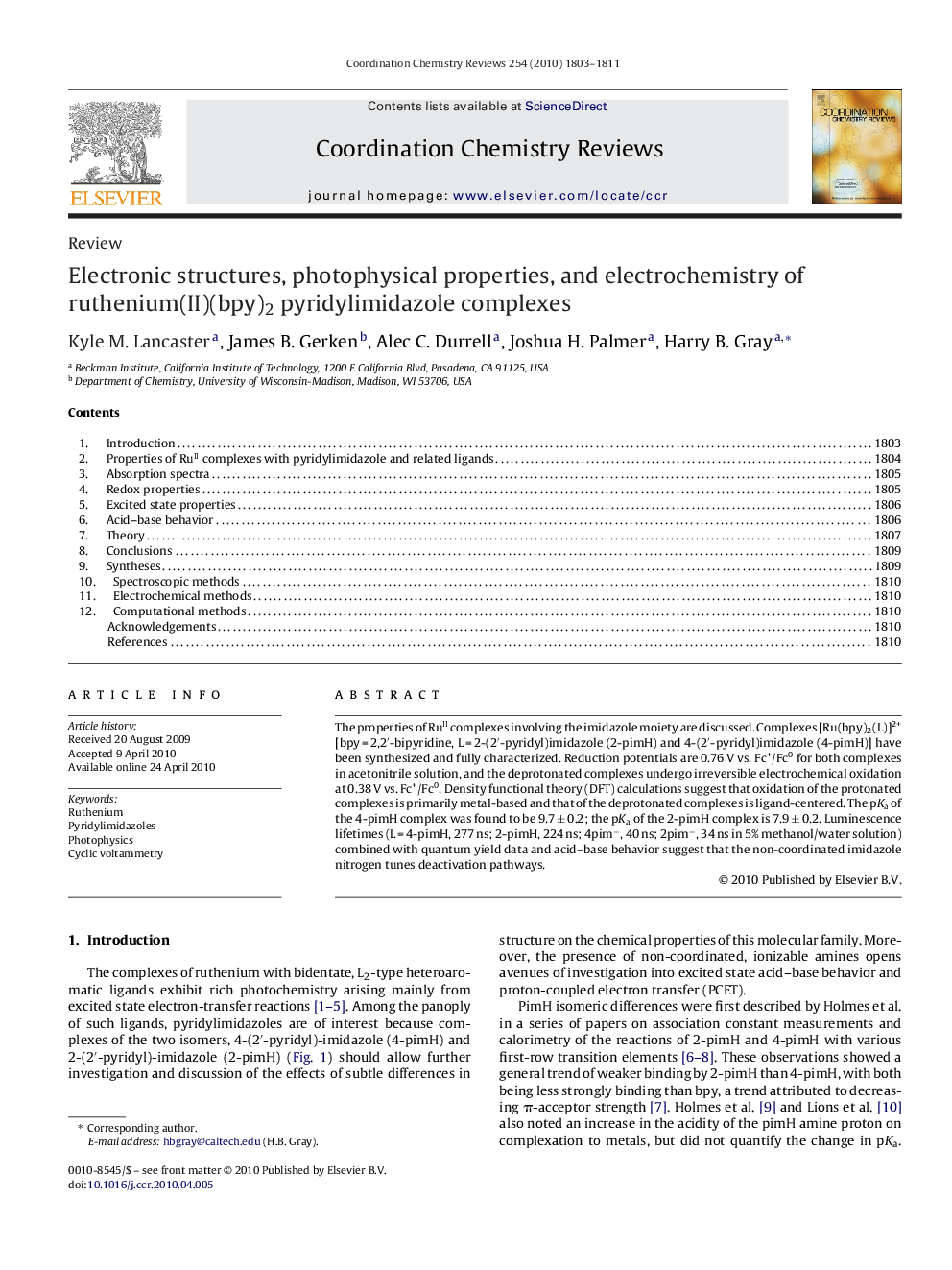| Article ID | Journal | Published Year | Pages | File Type |
|---|---|---|---|---|
| 1300248 | Coordination Chemistry Reviews | 2010 | 9 Pages |
The properties of RuII complexes involving the imidazole moiety are discussed. Complexes [Ru(bpy)2(L)]2+ [bpy = 2,2′-bipyridine, L = 2-(2′-pyridyl)imidazole (2-pimH) and 4-(2′-pyridyl)imidazole (4-pimH)] have been synthesized and fully characterized. Reduction potentials are 0.76 V vs. Fc+/Fc0 for both complexes in acetonitrile solution, and the deprotonated complexes undergo irreversible electrochemical oxidation at 0.38 V vs. Fc+/Fc0. Density functional theory (DFT) calculations suggest that oxidation of the protonated complexes is primarily metal-based and that of the deprotonated complexes is ligand-centered. The pKa of the 4-pimH complex was found to be 9.7 ± 0.2; the pKa of the 2-pimH complex is 7.9 ± 0.2. Luminescence lifetimes (L = 4-pimH, 277 ns; 2-pimH, 224 ns; 4pim−, 40 ns; 2pim−, 34 ns in 5% methanol/water solution) combined with quantum yield data and acid–base behavior suggest that the non-coordinated imidazole nitrogen tunes deactivation pathways.
